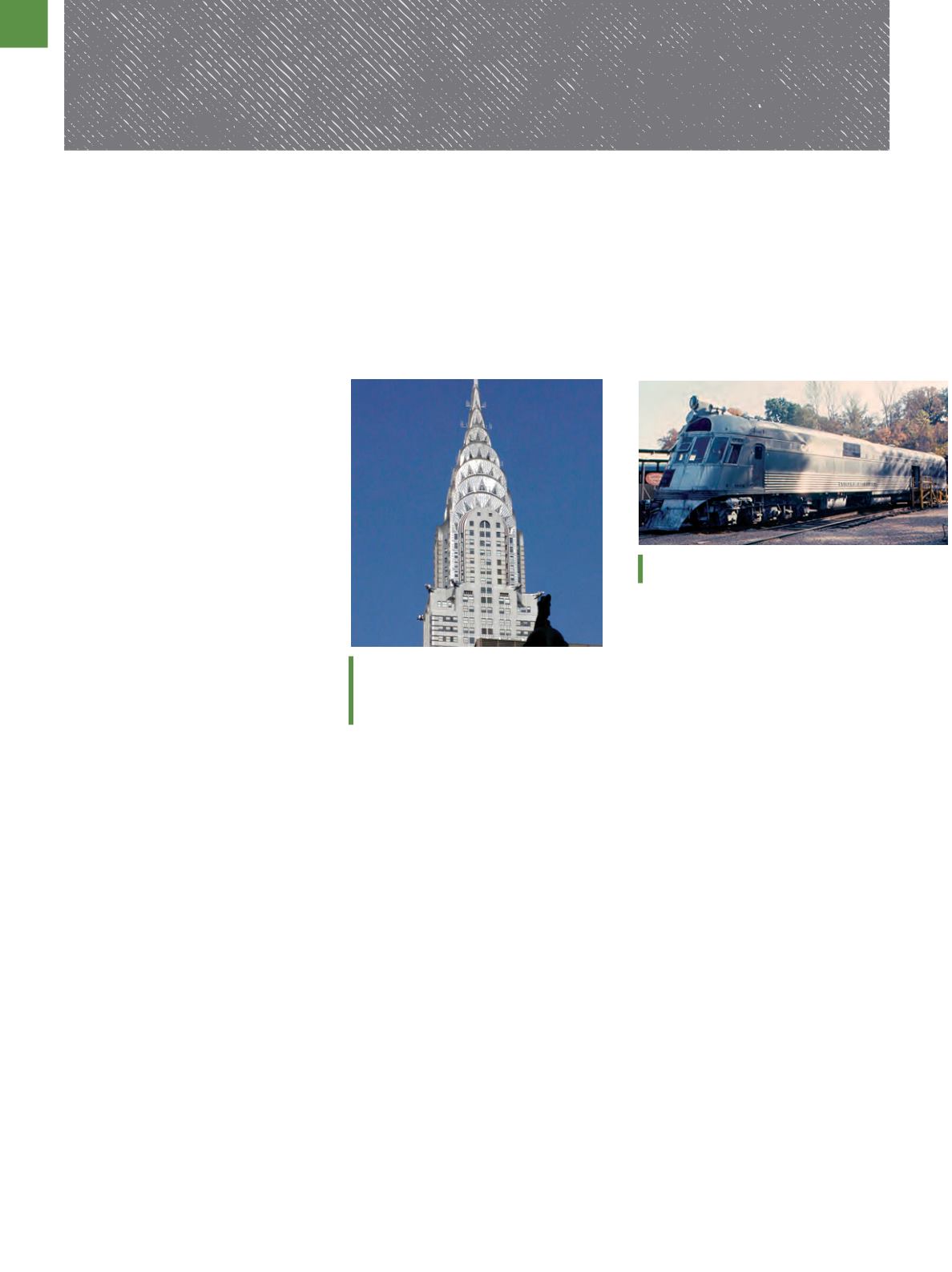

B
efore World War I began, a small
amount of stainless steel cutlery
and tableware was produced in
Sheffield, England. Meanwhile in the
U.S., the first heat of stainless steel was
melted at the Pittsburgh plant of the
Firth-Sterling Steel Co., a subsidiary of
Thomas Firth and Sons, headquartered
in Sheffield. However, the decade from
1910-1920 saw little progress in stain-
less steel production mainly because
throughout World War I, all available
metal was used to make exhaust valves
for aircraft engines in both the U.S. and
England. During the war, one of the ma-
jor stainless producers was Carpenter
Steel Co., a manufacturer of steel for
Liberty aircraft engines.
Most production processes of this
era used the heat-treatable martensitic
grade—13% chromium and 0.30% car-
bon. These general martensitic grades
were covered in the U.S. by patent appli-
cations in March 1915 from both Elwood
Haynes and Harry Brearley. Rather than
fight the conflict in court, Brearley and
Thomas Firth and Sons formed a syn-
dicate named The Stainless Steel Co.
to hold all patents. Haynes agreed to a
30% share in the company and Brearley
and Firth held 40%. Several other U.S.
companies held the remaining 30%.
This solved the problem for ferritic and
martensitic grades of stainless, although
Krupp—in Germany—held patent rights
for the austenitic grades.
Early applications
Throughout the majority of the
1920s, only ferritic and martensitic
stainless steels were made in the U.S.
This was extremely limiting because
during the next few years, the austenit-
ic grades were required for major stain-
less steel applications. The commercial
dilemma was corrected when patents
were exchanged between England and
Germany in 1923, with a royalty paid in
1928 to import or produce austenitic
grades in the U.S.
After the war ended, initial uses for
stainless steel again involved cutlery and
tableware. By 1923, this had expanded
to surgical and dental instruments and
then to containers for nitric acid. New
applications throughout the decade in-
cluded milk handling equipment, surgi-
cal implants, cookware, golf clubs, and
automotive trim. Perhaps the most spec-
tacular was the curtain wall for the upper
seven stories of the brand new Chrysler
Building in New York, including the huge
gargoyles that serve as its architectural
trademark. This building used 48 tons
of austenitic stainless steel, from a total
of 53,000 tons produced in 1929. The in-
dustry was just getting startedwith these
new austenitic stainless offerings, with
steel companies like Allegheny, Ludlum,
Carpenter, Crucible, Lukens, Latrobe,
and others as the major pioneers and
producers.
Meanwhile, in England, W.H. Hat-
field hadmodified the German austenitic
alloy containing 20% chromium plus 7%
nickel to the now familiar 18%chromium
plus 8% nickel (18-8) that became AISI
302 in the U.S. He also added titanium
to combine with the carbon for AISI 321,
greatly improving weldability. 18-8 went
on to become the single most important
alloy in stainless steel because it offers
the ideal combination of corrosion and
acid resistance, formability, and the abil-
ity to be polished to a beautiful finish.
1930s and 1940s
The Great Depression of the 1930s
impacted stainless steel as it did all
metal making. Production decreased
from 58,000 tons in 1929 to 23,000 tons
in 1932. Only a few applications saw
increased stainless steel consumption
during the decade, mainly in the trans-
METALLURGY LANE
STAINLESS STEEL: THE STEEL THAT DOES NOT RUST — PART II
Fromwartime use to cutlery and building facades, the stainless steel industry
began to experience dynamic growth from the 1920s on, especially following WWII.
etallurgy Lane, authored by ASM life member Charles R. Simcoe, is a yearlong series dedicated to the early history of the U.S. metals
and materials industries along with key milestones and developments.
The top seven stories of the Chrysler
Building are covered with austenitic
stainless steel. Courtesy of Petri Krohn and
Leena Hietanen.
Burlington Zephyr stainless steel passenger
train, circa 1935. Courtesy of Roger Wollstadt.
A D V A N C E D M A T E R I A L S & P R O C E S S E S | F E B R U A R Y 2 0 1 5
3 2


















